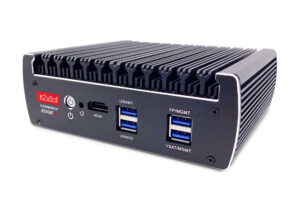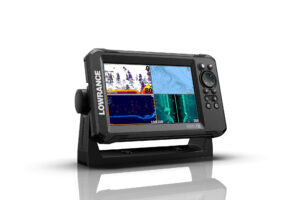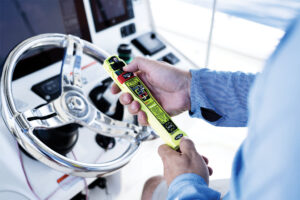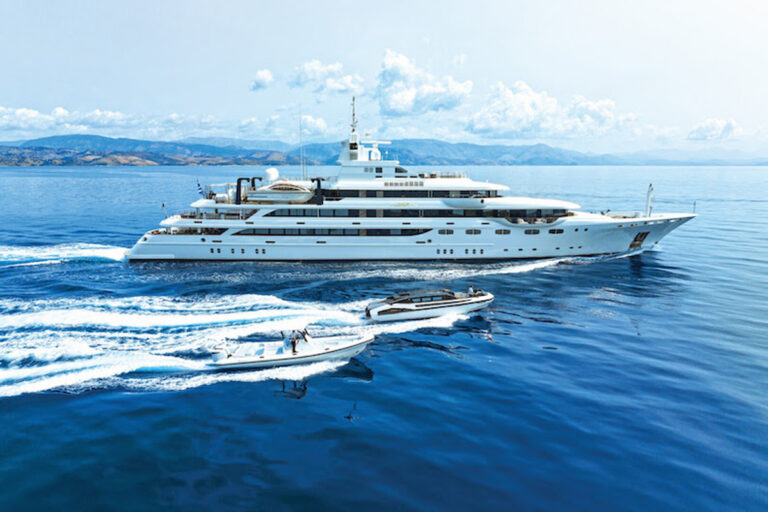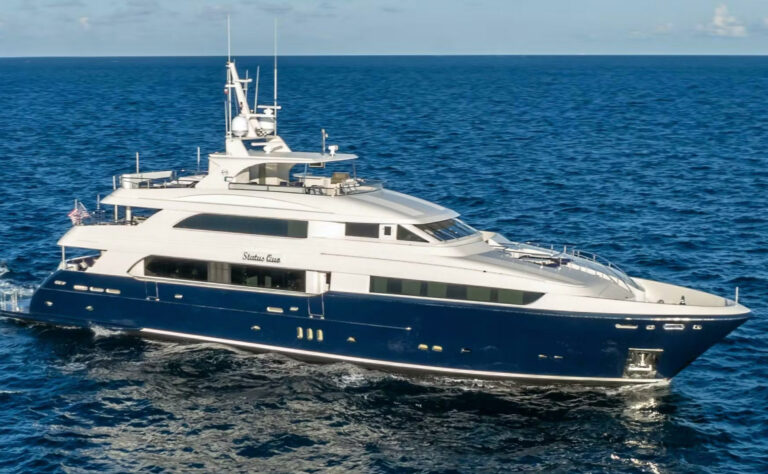If you believe the convenience of downloading weather information directly from a satellite has made the weatherfax obsolete, Furuno’s new Fax30 facsimile receiver may change your mind. The Fax30, which also receives Navtex data, makes this cost-free weather and navigation information readily available and easy to access, even for the most inexperienced users. A “black box” sensor for use with a Furuno NavNet multifunction display or personal computer, the Fax30 ensures mariners have access to weatherfax and safety information virtually anywhere.
When used with the company’s NavNet display or a PC equipped with Windows and an Ethernet hub, the Fax30 replaces traditional paper printouts with on-screen images that can be edited, manipulated and stored for future use.
Since signal and control functions are exchanged directly between the Fax30 and the NavNet display, or via a standard Ethernet connection, installation should be easy. Where conventional fax systems use analog receivers, the Fax30 processes information using digital signal processing, automatically optimizing performance to match signal conditions. This reduces noise and interference, and provides cleaner, sharper images. The usual practice of monitoring the incoming audio signal to find the optimum reception frequency is eliminated, since the receiver automatically selects the best reception frequency by assessing signal strength, signal-to-noise ratio and overall quality.
The Fax30 receives one facsimile image or Navtex message at a time. The user can manually choose between the two sources or set the receiver for automatic, facsimile or Navtex mode. In automatic mode, timer-programmed weatherfax information takes priority over Navtex messages, which are transmitted cyclically. Urgent warnings are displayed automatically, and all Navtex messages, once stored in the unit’s memory, can be retrieved at any time.
Icons offer a choice of data inputs from radar, plotter, sonar, external video or the Fax30, plus a number of combined data displays. The Fax30 also offers a set of user-programmable “hot pages, which allow quick access to information.
When the Fax30 is used with a NavNet display, reception settings can be automatic or under direct control of the operator. Setup begins when you select the initial operating mode using one of the display’s “soft keys (keys whose functions vary with the program in use). The choices are WX Fax, Navtex or Mode Setup. Pressing Mode Setup opens a dialog box that prompts the user to select WX Fax, Navtex or Fax (TIMER) & Nav. The Fax30 can be programmed to automatically notify you of an incoming weatherfax image or Navtex message by displaying a Fax30 icon on screen.
Setting up the Fax30 for use with a PC is similar. If you plan to use a PC and NavNet display, start by turning on the NavNet, so that time information from the GPS is transferred to the Fax30. This will initialize its timing circuits. (The receiver operates using Coordinated Universal Time.) Fax images sent to a PC are stored in the computer’s memory as GIF files.
Setup also requires selecting the zone that corresponds to your vessel’s location-we were in Florida, so we chose “North Atlantic. A dialog box then presents a list of available transmitting stations. After selecting your station, you can set the receiver to pick up any of the listed reception frequencies or automatically scan for the best one. Setup is completed by choosing the drum speed and index of cooperation (IOC) that correspond to those in use at the transmitter. The IOC controls the line-density standard and is determined by the World Meteorological Association. An IOC of 576 provides a high-density image; an IOC of 288 provides a low-density image. The Fax30 can automatically select these values, or you can make your selections manually.
The Fax30’s memory is preprogrammed with the frequencies of 84 transmitters. The unit’s free memory allows the user to define up to 320 additional channels. Navtex station selection can be programmed in automatic mode or manually selected.
The user can preset up to 30 time-controlled automatic-receive programs, each specifying the time, and the identity and transmission frequency of a weatherfax station. Incoming fax images are automatically stored in a 12-image-capacity memory. When the unit is in fax mode, stored faxes appear as thumbnail images, which are enlarged when selected. Images can be edited, magnified for detail and rotated-good for faxes transmitted against a vertical reference line. Also, images can be locked, which will prevent you from overwriting them as new information is received and stored. Image-editing tools allow you to correct phase mismatch (which creates “dead areas in fax images) and phase synchronization (which creates skewed images), and apply one of three levels of noise reduction. Images are displayed in monochrome, grayscale, blue/red, white/blue or pink/black. Images can include the standard black text on a white background or white text on a black background.
The Fax30’s double-conversion super heterodyne receiver picks up two bands: 80 to 160 kHz and 2 to 25 MHz, plus the two Navtex frequencies, 490 and 518 kHz. Though no sensitivity or selectivity data is listed in the manual, the receiver’s performance was clearly exceptional. PC operating procedures are written for use with Internet Explorer, but Netscape Navigator is acceptable. The characteristics and quality of incoming signals are viewable, and if necessary, you can fine-tune the receiver’s frequency.
A power connector, ground terminal and an Ethernet cable connector are grouped on one end of the unit. The Fax30 is 12 inches long, less than 9 inches wide and 2 inches tall, making it easy to mount in a convenient location. Judging by its performance, the Fax30 has made solid strides in reinventing the weatherfax. Price: $995.
Contact: Furuno U.S.A., Inc., (360) 834-9300; www.furunousa.com.

